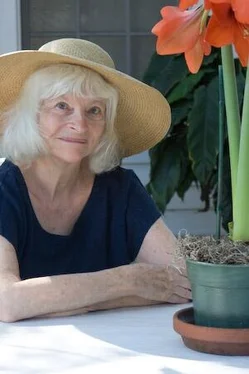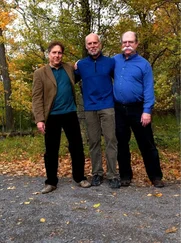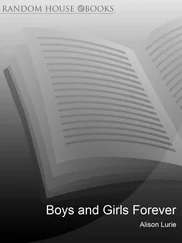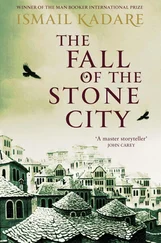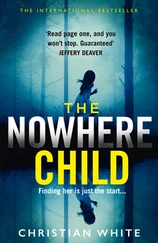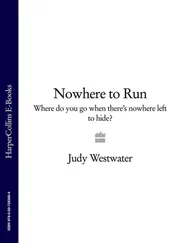6
ALONG THE PACIFIC COAST Highway, in an unsteady stream of cars, moved the pink station wagon in which Katherine Cattleman, Susy Skinner, and Susy’s two children were going to visit the G.J. Putty mansion, art museum, garden, and private zoo. Katherine and Susy were in front; Mark, aged three, lay on his stomach in the cargo area, digging up the rubber matting with a toy bulldozer, and Viola, aged six, sat primly in front of him holding a plastic purse in white nylon gloves.
The Putty estate is not open to the general public, but it may be visited on certain days by those who have made previous arrangements, and Fred Skinner had made such an arrangement through someone he knew in the U.C.L.A. Art Department. Katherine admitted to herself that it was thoughtful of him to have done so. She had no interest in the mansion, the garden, or the zoo, but the collection included paintings by Rubens, Renoir, Matisse, etc. which few people had ever seen, and she felt (or rather knew she ought to feel) gratitude to Fred for this opportunity. In the same way, she owed him gratitude for the job she had just accepted at U.C.L.A. which would start next week. It had turned out not to be a trick at all, but a bona fide position: research assistant on a project two professors in the Department of Social Sciences were starting under a grant from the National Institute of Mental Health. Yes, she owed gratitude to Fred Skinner, but it irritated her to pay him; she preferred to deliver it to his wife.
“What awful, awful traffic!” Susy said. They had got to a break in the Santa Monica cliffs where the canyon opens out onto the beach. On both roads, cars stood jammed together in the hot sun. The sidewalks were crowded with muscular people in bathing suits and sunglasses and beach robes, most of them burned to the color of furniture. They crossed the highway in front of the stopped cars, carrying canvas umbrellas, surfboards, portable radios, towels, and bottles of Coke, under a banner of red and green spangled letters two feet high: MERRY CHRISTMAS. The lunch counter on the corner repeated this theme: two nearly naked boys stood eating popsicles behind a window painted with white, metallic snow and ice. In the window of the bar next door the snow was solid Styrofoam, strong enough to support a cardboard sleigh and plastic reindeer. The glittering sun made Katherine’s sinuses hurt, and she squinted her eyes.
“Want to go to the beach, Mommy,” Mark said.
“Some other day, honey. Today we’re going to the zoo, and see all the animals.”
“Honestly,” Susy added, as the lights changed and then changed back without their having moved more than a few feet. “You’d think everybody in L.A. was trying to get to the beach today.” She started forward as the lights changed, then put on the brakes sharply and blew the horn at a bunch of high-school kids who had begun to cross in front of her. Honk! One of the boys turned and made a face at her over the hood, putting his thumbs in his ears, waggling his fingers vulgarly, and sticking out his tongue. In the rear-view mirror, Katherine was surprised to see Viola imitating him, white gloves and all.
“The way some people bring up their children,” Susy said, glancing round as if with some sixth sense; but Viola had returned her hands to her lap.
“When are we going to get to the zoo, Mommy?”
“We’re nearly there, love.”
Again on their right the cliffs rose up sheer, a high wall of pale dried mud, eaten by the wind into uneven patterns like giant ants’ nests. Presently Susy pulled off the highway and stopped in front of an iron gate which was wedged into a break in the cliff. She got out of the car, rang a bell, and spoke into a box. A buzzer sounded, the gate opened, and they drove in. As soon as the tail of the station wagon was through, the gate swung shut behind them with a loud iron clang.
“They’re locking us in, Mommy,” Viola exclaimed. “They’re locking us into the zoo!”
“It’s all right, lovey. They’re not locking us in. They’re just shutting the gate again, in case some bad men wanted to get in and steal something.”
They started uphill on a narrow road crowded by dark trees, crowded in turn by the steep sides of the canyon. High above, shreds of bright blue sky appeared and disappeared. From somewhere not too far off came the sound of a machine or carnivorous animal roaring and grinding its teeth.
“What’s that, Mommy?” Mark asked. “What’s that noise?”
“I think I want to go home, Mommy,” Viola announced.
Round a last bend the gully opened out into a shallow landscaped basin: a circular sweep of drive, massed trees and flowers, and a long stone villa. “Here we are, kids!” Susy said.
At first sight the effect was European—Sussex or the Île-de-France; but the trees were too tall and of strange shapes, Katherine thought; the flowers were too large, and the hills behind the house were much too near: they looked dry and flat, like the canvas backdrop of a stage.
Susy parked the car, and they got out next to an orchard: rows of pruned trees, the ground beneath them littered with huge, heavy yellow oranges—Why no, they must be grapefruit; hundreds of grapefruit lay here, ripe and over-ripe, rotting in conspicuous waste.
They walked towards the house. About two hundred flower bushes were growing beside the drive, and both the bushes and the earth beneath were covered with burning scarlet and crimson blossoms. “Camellias—those are all camellias!” Katherine exclaimed; the camellias she knew always came in groups of one or two from florists’ shops.
“Golly, yeah. And look over there on the lawn,” Susy said. “Peacocks. See the peacocks, Markie, the pretty birds ... No, honey, we’ll go over that way later. Come on, now.”
Katherine walked up the drive behind Susy, Mark, and Viola, outlandish figures in their identical tight pants and rubber sandals and butter-colored hair. The flowers seemed to grow larger, their odor thicker, as they approached the house, and she thought with pity of the paintings locked up inside, shut away here at the world’s end among monstrous flora and fauna.
Of course these Los Angeles clothes did not mean what they appeared to mean. At first she had thought Susy’s style of dress a personal aberration, a freak. But when she went to visit her, she saw that most of Susy’s neighbors at Vista Gardens dressed the same way. She began to realize that all the tarts and starlets (in her mind interchangeable terms) whom she had seen in the streets and supermarkets of Mar Vista might be only housewives.
“Golly, will you look at those flowers!” Susy said. “They have so many they’re even throwing some of them away.”
“Where?”
“Right over there.” She pointed to a freshly dug plot at the side of the house. A trash can stood by it, stuffed indiscriminately with roots, branches, leaves, and flowers: pink, scarlet, white.
“Oh, lord,” Katherine sighed. “The waste of it! That’s what’s so terrible. And all those grapefruit, just spoiling down there.”
“Well, I guess Mr. Putty can afford it,” Susy said. “I guess he’s practically the richest man in America.”
“The waste of it!” Katherine repeated. “Those flowers are just going to die.” She began rummaging in the trash can. “I’m going to take them home.”
“Do you think you ought? Maybe they wouldn’t like it,” Susy said, looking around for “they.”
“I don’t care. It isn’t right.” Katherine stood up, her arms full of exotic plants. “I’m going to put them into the car.”
She ran down the drive, trailing roots and leaves, shut the strange flowers safely into the station wagon, and walked back.
“Let’s go see the pictures,” she said. Her sinuses ached more and more. She held her breath, as it were, until they entered the museum; then she looked only at the floor. She shut her eyes to the view through the windows of the hall, waiting for the sane views, miraculously preserved for hundreds of years and greedily transplanted here, that awaited her inside. When they were admitted to the principal gallery she hurried into the room, turned her back to the Skinners, and raised her eyes.
Читать дальше
